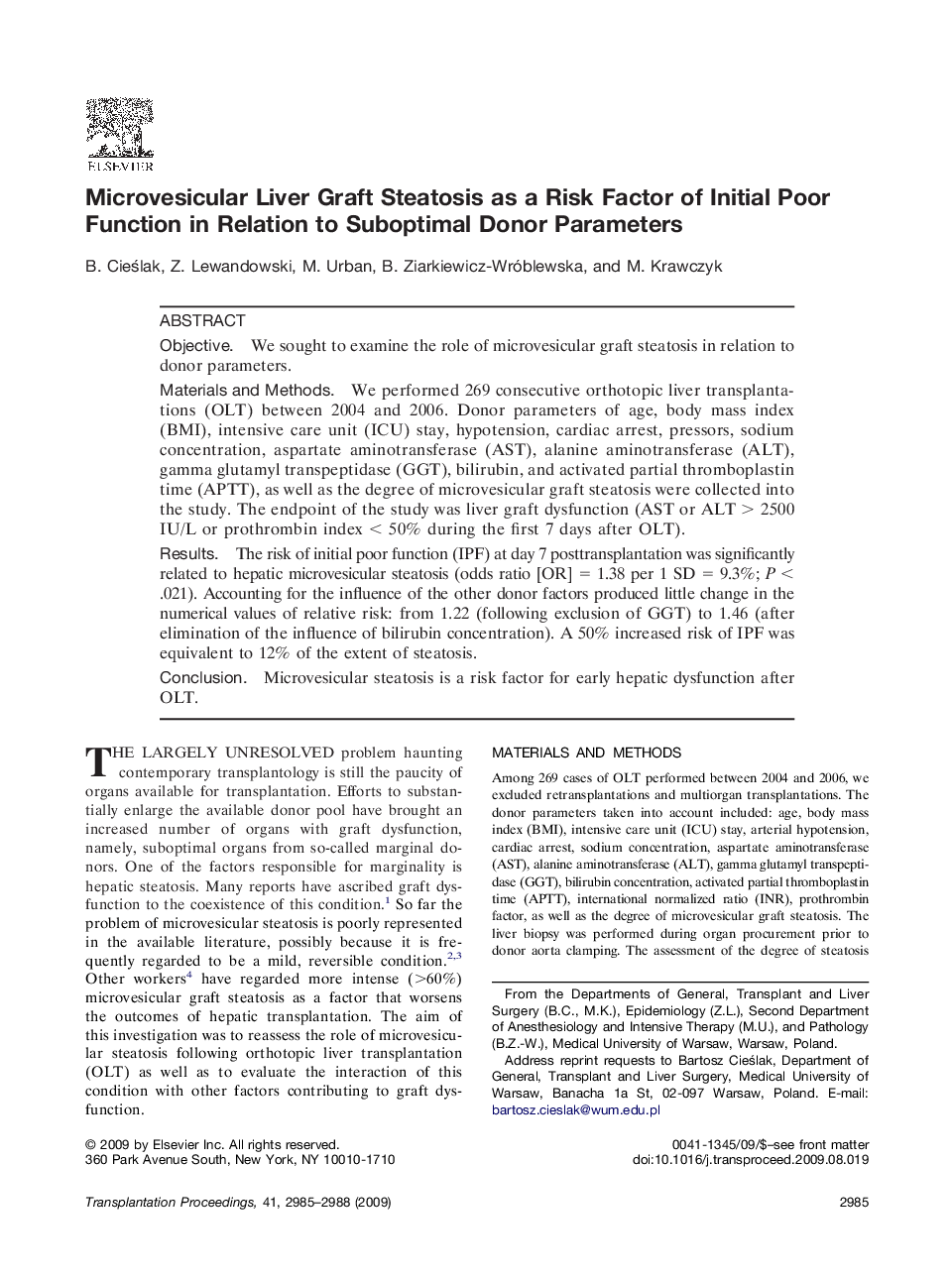| کد مقاله | کد نشریه | سال انتشار | مقاله انگلیسی | نسخه تمام متن |
|---|---|---|---|---|
| 4258969 | 1284565 | 2009 | 4 صفحه PDF | دانلود رایگان |

ObjectiveWe sought to examine the role of microvesicular graft steatosis in relation to donor parameters.Materials and MethodsWe performed 269 consecutive orthotopic liver transplantations (OLT) between 2004 and 2006. Donor parameters of age, body mass index (BMI), intensive care unit (ICU) stay, hypotension, cardiac arrest, pressors, sodium concentration, aspartate aminotransferase (AST), alanine aminotransferase (ALT), gamma glutamyl transpeptidase (GGT), bilirubin, and activated partial thromboplastin time (APTT), as well as the degree of microvesicular graft steatosis were collected into the study. The endpoint of the study was liver graft dysfunction (AST or ALT > 2500 IU/L or prothrombin index < 50% during the first 7 days after OLT).ResultsThe risk of initial poor function (IPF) at day 7 posttransplantation was significantly related to hepatic microvesicular steatosis (odds ratio [OR] = 1.38 per 1 SD = 9.3%; P < .021). Accounting for the influence of the other donor factors produced little change in the numerical values of relative risk: from 1.22 (following exclusion of GGT) to 1.46 (after elimination of the influence of bilirubin concentration). A 50% increased risk of IPF was equivalent to 12% of the extent of steatosis.ConclusionMicrovesicular steatosis is a risk factor for early hepatic dysfunction after OLT.
Journal: Transplantation Proceedings - Volume 41, Issue 8, October 2009, Pages 2985–2988